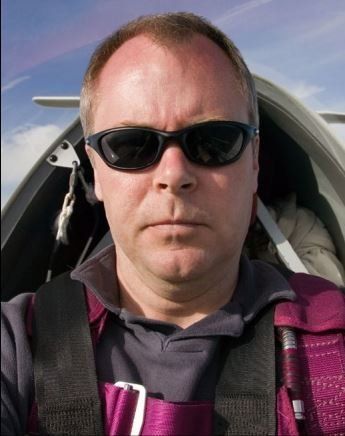Hope Found for Unrecognized Ancient Malady Affecting Hundreds of Millions Worldwide
- By Bruce Holden
- •
- 30 Nov, 2016
- •
Photophobic Society of America (P.S.A.) is Raising Awareness and Finding Solutions to help those suffering with extreme intolerance to bright light and blinding sun to see better with less pain and discomfort.

Press Release – ELK GROVE, Calif., Nov. 21, 2016 – Hundreds of millions around the world avoid the sun and bright lights due to a condition known as “Photophobia.” These people feel lonely, ostracized, ridiculed, and misunderstood by their peers, relatives, and neighbors. They experience many social and emotional ill effects as a result of living in darkness. Today, a new nonprofit organization P.S.A. is championing their cause.
“Photophobia is an unrecognized symptom of over 351 known diseases. Photophobic people have been an undiscovered and underserved group,” explains Bruce Holden, Optician and founder of P.S.A.. “People with intolerance to light are forced to live in the shadows. They can’t go to work, to school, shop for necessities, or venture outdoors for any reason”. It’s easy to understand why this condition is so debilitating. Our mission is to connect people with resources in their area, from counselors and other medical professionals to government agencies and service organizations that can provide the right kind of assistance and support.”
Photophobia is a symptom of another disease or cause, and it is usually neurological in nature rather than a defect of the eye itself. Symptoms range from eye and facial tension to headaches, nausea, seizures, or worse. The more than 351 causes for photophobia are too numerous to list, but include head or eye trauma, meningitis, and certain over-the-counter and prescription drugs. A detailed list of causes can be seen on the web site below. People experiencing migraine headaches probably make up the largest share of photophobics.
The real tragedy of photophobia is that its effects don’t end with the physical symptoms. Because the condition is unfamiliar to so many people, those living with the condition are often misunderstood by their peers. This intensifies the sense of isolation, and needless shame that photophobics experience almost daily.
While the medical community has long recognized photophobia, and insurance companies and government agencies acknowledge it as a disability, little relief has been available to sufferers. P.S.A. is working hard to change that. One of the first innovations of P.S.A. is demonstrating Extreme Glare Technology developed to protect the eyes by Optician Bruce Holden.
Extreme Glare Technology blocks more glare, and blinding sunlight than any other technology known in the world today. These sunglasses can help people with photophobia escape from solitude in the shadows. Extreme Glare sunglasses are not a cure for the many causes of photophobia, but can literally be life changing to these reclusive individuals.
P.S.A. needs help to fulfill its mission of giving hope, and direction to photophobics around the world. The organization welcomes donations and volunteers. The first milestone to achieve will be the opening of a California office, from which staff can better assist people with the photophobia, network with medical professionals, and reach out to the community for its support. P.S.A. plans to open offices in other states, and perhaps the world as funds allow.
About P.S.A.
P.S.A. was founded as a nonprofit charitable organization in 2016 in order to help hundreds of millions of people both in the USA and worldwide who are suffering from photophobia. Photophobia can be extreme and painful sensitivity to light. It can begin at birth as albinism, caused by head or eye trauma, or be produced by prescription drugs, or many other causes.

POLARIZATION. Polarized lenses are not recommended for use in the aviation environment. While useful for blocking reflected light from horizontal surfaces such as water or snow, polarization can reduce or eliminate the visibility of instruments that incorporate anti-glare filters. Polarized lenses may also interfere with visibility through an aircraft windscreen by enhancing striations in laminated materials and mask the sparkle of light (glint) that reflects off shiny surfaces such as another aircraft’s wing or windscreen, which can reduce the time a pilot has to react in a “see-and-avoid” traffic situation.
FRAMES. The selection of sunglass frames is probably more a matter of personal preference than lens material or tint. The frames of an aviator’s sunglasses, however, must be functional and not interfere with communication headsets or protective breathing equipment. Frame styles that incorporate small lenses may not be practical, since they allow too much visible light and UV radiation to pass around the edges of the frame. A sunglass frame should be sturdy enough to take some abuse without breaking, yet light enough to be comfortable. An aviator’s sunglasses should fit well so that sudden head movements from turbulence or aerobatic maneuvers do not displace them. Finally, use of a strap is recommended to prevent prescription sunglasses from being accidentally dislodged, or a necklace chain can be used to allow them to be briefly removed and subsequently replaced.

